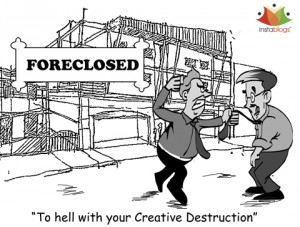This brief piece, publishing by the Association of American Universities (aau.edu) has some excellent information on the importance of basic research, and the proportion of overall spending on it.
Who gets federal research dollars?
Here is an article (and a link to data from the National Science Foundation) on the universities that receive the largest amounts of federal research dollars.
http://www.huffingtonpost.com/2013/04/27/universities-government-money_n_3165186.html
Which raises a couple of interesting questions: Should the universities receiving the highest numbers of research dollars also be those who have the best track record for commercializing technologies? If not (and there are good reasons why that might not be the case), what should the criteria be for measuring successful expenditures?
Richard Branson on how small business can innovate
Here is a sort article that relates to the material discussed this week and the course as a whole. Branson gives a short synopsis as to how business can be successful by looking at what what customers want and how to identify areas in the market that need innovation.
http://www.entrepreneur.com/article/229393
Article on Success of Startups in Singapore
I found this brief blog article interesting given our discussion of Singapore in class a few weeks ago. It notes that Singapore is home to a growing base of startup entrepreneurial activity, especially in the technology sector. Relating to our recent discussion of the role of law in fostering entrepreneurial activity and innovation, I wonder to what degree Singapore’s tightly controlled legal system has helped foster this entrepreneurial growth, or whether it is merely a byproduct of Singapore’s economic success.
Is American economic growth over? Not so fast …
“Gordon’s paper has received widespread attention for his provocative thesis that U.S. productivity growth is essentially over and that the average American will be no better off, and likely worse off in the future.”
Entrepreneurship and Agency Capture Theory
Reading some of the materials so far discussing how the law should be to encourage innovation and entrepreneurs I cannot help but think of how this sort of encourages capture theory in terms of agencies. It seems like the goal would be to have agencies create policy that serve industry and potentially limit themselves in a fashion that is textbook capture theory in administrative law.
Creative destruction, redux …
Mitt Romney’s private equity past puts “creative destruction” in the spotlight…
(C) Carol Simpson
From Kendall Wilson (via email): “I think an interesting discussion lies around creative destruction and constantly shifting of companies, technologies and wealth, and unemployment in America. It seems that there could be a gap for law to fill, in order to protect those affected by massive job cuts.”
Tech Company General Counsel Talking Innovation
This article provides an interesting perspective on the role of a company’s lawyers in fostering innovation.
http://www.utsandiego.com/news/2013/Dec/23/qualcomm-counsel-talks-innovation/?#article-copy
Why Great Companies Fail
This is an interesting article, in which TIME interviews author Jim Collins about the lessons he learned while writing his book, How the Mighty Fall: And Why Some Companies Never Give In.
“There are three things worth keeping in mind about any great enterprise that eventually falls. Number one, the seeds of decline are usually in place long before decline becomes visible — like a disease where you look strong on the outside but you’re already ill on the inside. Second, we tend to think decline happens because of complacency — people just sitting still, not being aggressive or innovating. But we found there’s often tremendous change and innovation leading right up to the point of fall. It’s overreaching: undisciplined growth, undisciplined risk-taking. Finally, I was surprised by how far you really can fall and still come back — it’s one of the most wonderful things to come from this work. The tendency for many of us might be to give up too early.”



